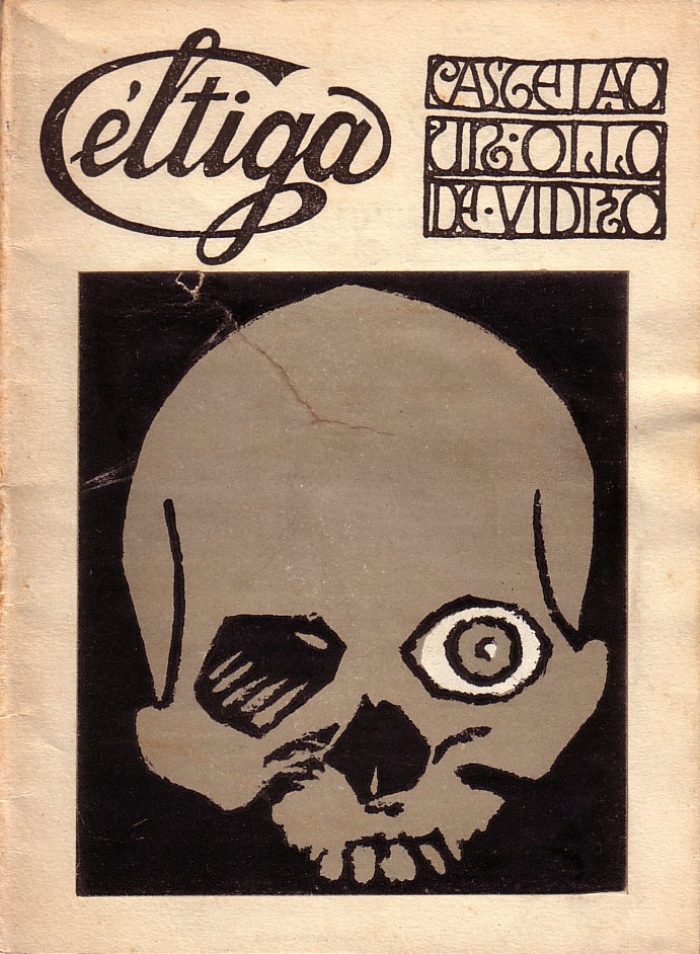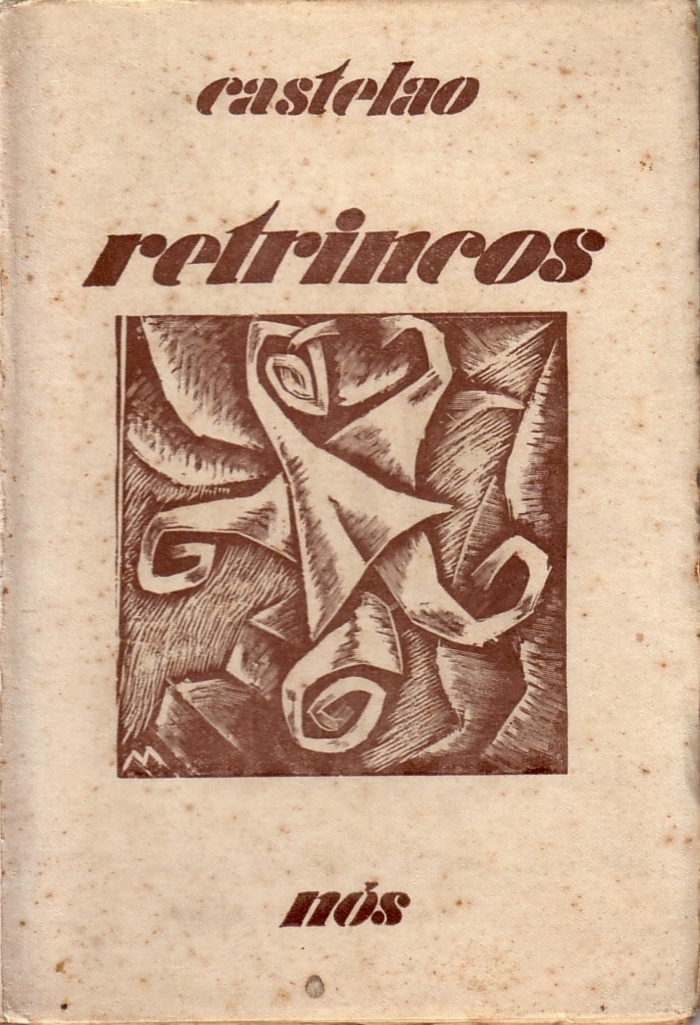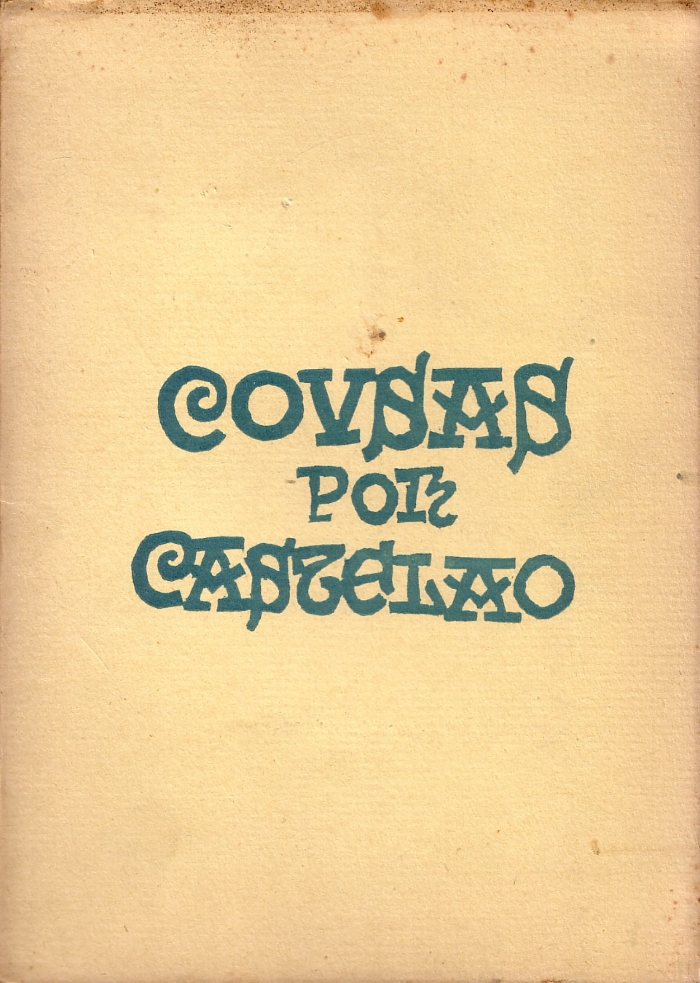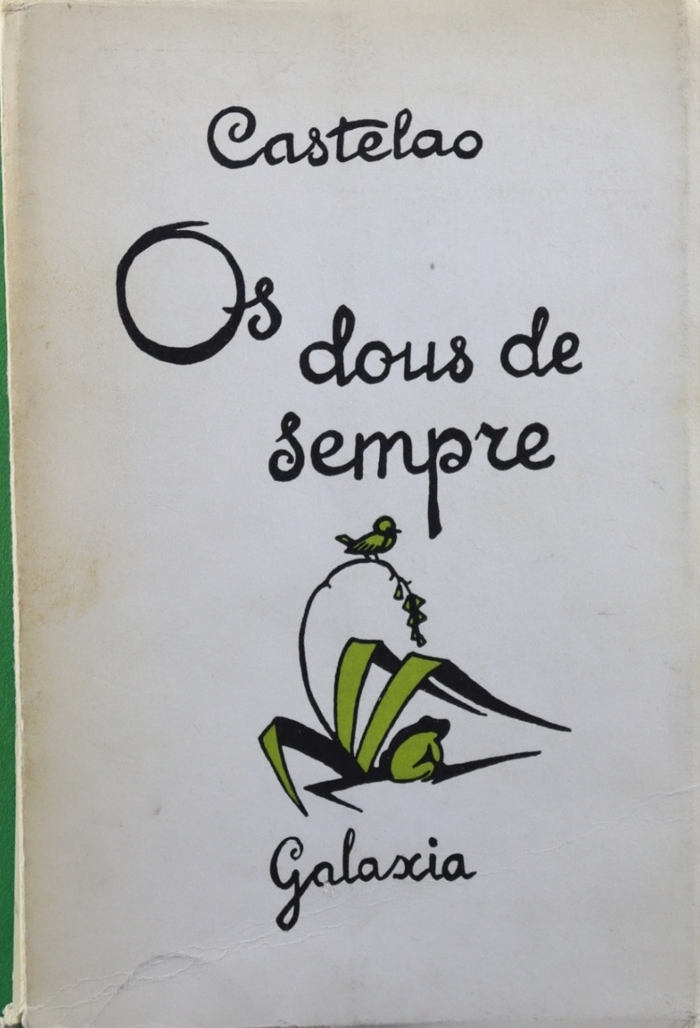Castelao as a Writer
His literary poetics would be that of his graphic art: “Making synthetic things —so synthetic that they can't be more synthetic.” He uses the traditional story as reference and chooses a popular vocabulary, but fills the stories with rhythm and feeling. He builds the narratives with realistic language, but brings modernity closer with lyricism and humour, producing a great emotion in the reader.

Un ollo de vidro.
Memorias dun esquelete
(A Glass Eye. Memories of a Skeleton)
1922
Short stories illustrated by the author.
Created as a complement to read in an exhibition of the album Nós in 1920 and some memories written by a skeleton in a cemetery, which is grateful to “that glass eye that was of no use to me when I was alive, now is useful to look.” An apparently very simple, but very meticulous style, reveals the author's humour.
Image courtesy of Xabier Iglesias.

Retrincos (Remnants)
1934
Short stories illustrated by Maside.
Autobiographical stories spun chronologically from his childhood in the Argentinian region of La Pampa, his youth as a student in Compostela, his ephemeral job as a doctor or his reunion, already as a deputy, with Sabela, his dance partner at Rianxo's parties. Everything was calculated to move.
Image courtesy of Xabier Iglesias.

Cousas (Things)
1926, 1929, 1934
Text and illustrations by the author.
He was the creator of the micro-story in Galician language (1918) and of a new literary subgenre, Cousa (1920), in which he combines drawing and writing in a highly-expressive illustrated text. Initially published in the press, and others unpublished, they were later swelling the successive editions under the title of Cousas. It was reproduced in the 1929 Nós edition.
Imaxe por cortesía de Xabier Iglesias.

Os dous de sempre (The Usual Two)
1934
Novel. Illustrations by the author.
In this novel, the only one by the author, he builds each chapter as an independent story, but the book tells the story of two antithetical characters and, on the contrary, friends. In this narration he defends his dynamic conception of 1931: the balance between the sympathetic and the phrenic forces.
It is dedicated to the young Galician people.
Image courtesy of Xabier Iglesias.

Os vellos non deben de namorarse (Old People Should Not Fall in Love)
1953
Theatre. Play interpreted in Buenos Aires in 1941, with scenery and masks by the author.
Begun in Pontevedra in 1933 and completed in exile in New York between 1938 and 1939, it is “a work imagined by a painter and not by a writer,” according to the author. It is a mask theatre in three sets that represents three old characters in love with three young people. It ends with an epilogue in which the three old men meet once they are dead in the cemetery.

As cruces de pedra na Bretaña (Stone Crosses in Brittany.)
1930
Essay on the art of the Breton cruisers. Illustrated by the author.
Castelao toured Brittany in 1929 with a research grant and the result is this work with which he was accepted by the Seminario de Estudos Galegos (Seminar of Galician Studies). “You could not talk about our stone crosses if you don’t visit Brittany first, and that's where I went.”

As cruces de pedra na Bretaña (Stone Crosses in Brittany.)
1930
Page with drawings.

As cruces de pedra na Galiza (Stone Crosses in Galicia)
1950
Essay on the art of Galician stone crosses. With numerous illustrations by the author.
The artist had been studying Galician stone crosses since 1922. This monograph, completed in exile in 1946, will be published in 1950, the year of his death, in Buenos Aires. A monumental work under the watch of Luís Seoane. In 1934, Castelao had entered the Real Academia Galega with a speech with the same title.

As cruces de pedra na Galiza (Stone Crosses in Galicia)
1950
Page with drawings.
This epic book is edited in exile by the publishing house Nós and with the stamp of the extinct Seminario de Estudos Galegos, as a tribute to its generation.



